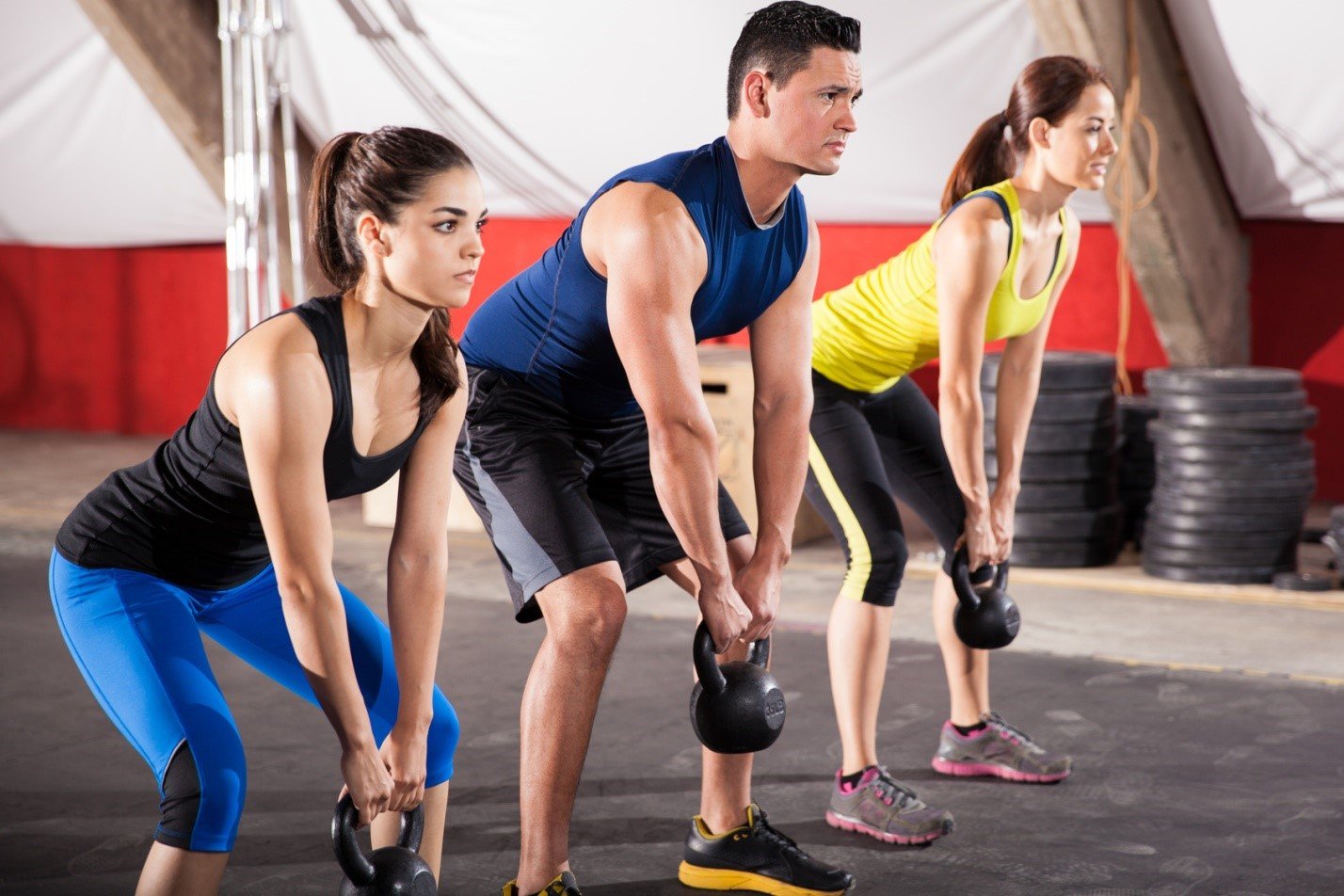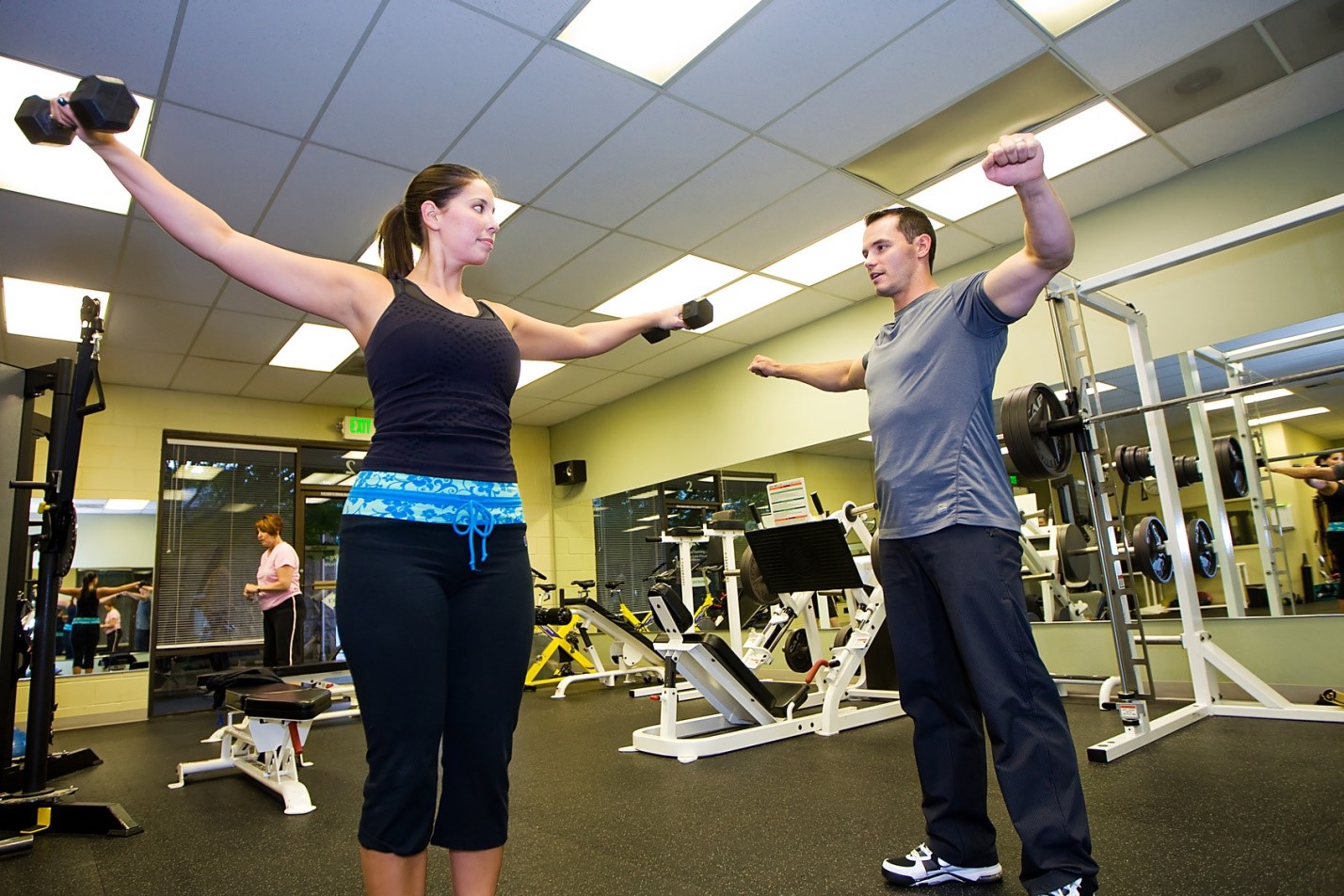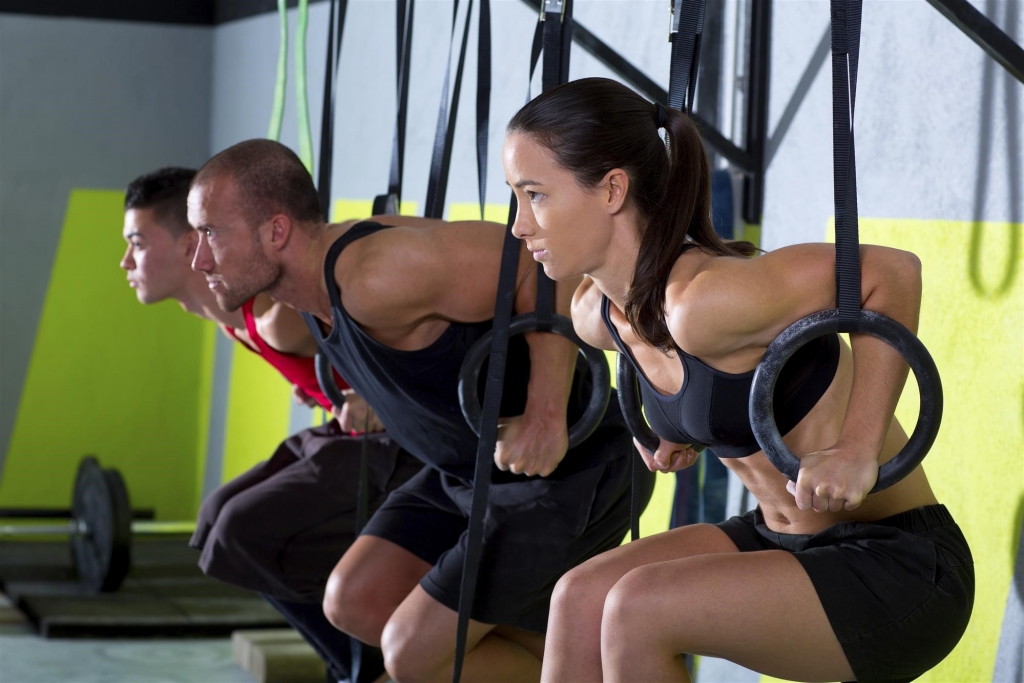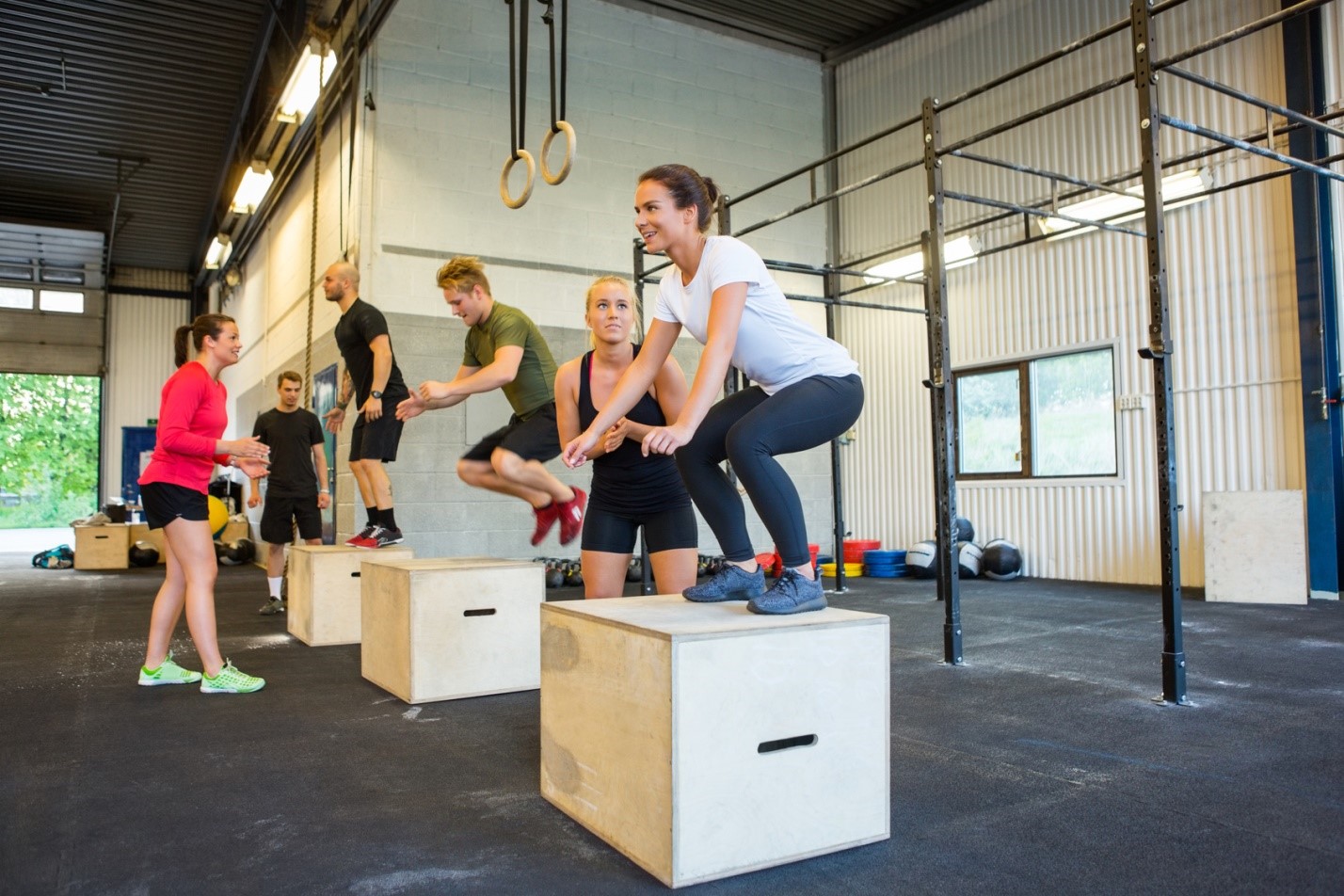Weightlifting and CrossFit: Pelvic Floor Friend or Foe?
It’s safe to say we’ve all heard of weightlifting. Many of us have even tried it at some point. CrossFit, on the other hand, may be new to many of us. A trademarked fitness program that has taken the world by storm, CrossFit involves “constantly varied functional movements performed at relatively high intensity” and combines weightlifting, gymnastics, and metabolic conditioning exercises. The popular program has become a fitness phenomenon, spreading across the globe rapidly—thousands of CrossFit studios and affiliated gyms exist today.
While CrossFit combines movements from several fitness disciplines, traditional weightlifting tends to focus solely on the use of dumbbells, barbells, and other weights to build and strengthen muscles. Weightlifting can be further broken down into the following three categories:
- Weightlifting for sport: Involving lifts such as the “snatch” and the “clean and jerk,” these moves are also used in CrossFit.
- Strength training: Weightlifting to increase physical strength.
- Bodybuilding: Weightlifting to build muscle mass.
Lifting weights is no longer seen as a sport reserved exclusively for men. Women are increasingly discovering the health benefits of weightlifting, including boosting metabolism, reducing bone loss, improving coordination and balance, and improving cardiovascular health.

When not done properly, however, traditional weightlifting and CrossFit moves can put excessive strain on the pelvic floor. This can lead to a host of problems, including pelvic organ prolapse and urinary incontinence (UI) in women.
Somewhat paradoxically, when done properly, weight-bearing exercise can improve core strength, helping prevent prolapse and UI. The key is performing the exercises correctly. More importantly, it’s about listening to your body.
Let’s explore the pros and cons of weightlifting, and CrossFit in more detail, including how they can strengthen (or damage) the vital muscles of the pelvic floor. Before we do, let’s go over the pelvic floor.
The Pelvic Floor: An Integral Part of Core Strength
A woman’s pelvic floor is made up of muscles, ligaments, connective tissues, and nerves that support the uterus, bladder, and rectum. The pelvic floor is part of the body’s core, which also includes the obliques, the diaphragm, the deep back muscles, the glutes, and other muscle groups. All of the core muscles—including the pelvic floor—work in concert to keep the body balanced and stable.
 Exercising the muscles of the pelvic floor regularly by performing Kegels with or without the aid of a pelvic floor exerciser is an important part of a woman’s overall health regimen. Why? Because when pelvic floor muscles are weakened from life events like childbirth and menopause, urinary incontinence (UI) often follows. Most women experience UI as leaking a few drops or a light stream of urine when they laugh, cough, sneeze, or strain from exercise.
Exercising the muscles of the pelvic floor regularly by performing Kegels with or without the aid of a pelvic floor exerciser is an important part of a woman’s overall health regimen. Why? Because when pelvic floor muscles are weakened from life events like childbirth and menopause, urinary incontinence (UI) often follows. Most women experience UI as leaking a few drops or a light stream of urine when they laugh, cough, sneeze, or strain from exercise.
Leaking urine is one sign of pelvic floor dysfunction. Other signs and symptoms include leaking feces (yes, ladies, it can happen); feeling a sense of urgency to go and/or not making it to the toilet in time; difficulty emptying your bladder or bowel; and prolapse, the signs of which include feeling a bulge in the vagina, painful sex, or pain in the pelvic area.
Weightlifting and many foundational CrossFit moves can put excessive strain on the pelvic floor, leading to urine leakage. It’s more common than you’d think, as illustrated by this video, aptly titled “CrossFit – Do You Pee During Workouts?”
Let’s look at CrossFit in more detail and explore which moves in particular can cause trouble for women who are at increased risk for prolapse.
About CrossFit
As mentioned earlier, CrossFit is a fitness program that combines metabolic conditioning, gymnastics, weightlifting, and diet. Common CrossFit exercises include:
| Metabolic Conditioning | Gymnastics | Weight Lifting |
| Biking | Squat | Clean and jerk |
| Running | Pull up | Snatch |
| Swimming | Push up | Squats (Air, Front, Overhead) |
| Rowing | Dip | Deadlift |
| Box jumps | Rope Climb | Kettlebell swing |
The Appeal of CrossFit
 Part of what makes CrossFit so appealing to women is the program’s inclusive nature. While in the past a program like CrossFit would have likely attracted almost an exclusively male following, today things are different. More and more women are realizing the benefits of weight-lifting, and women find the physically-challenging nature of CrossFit empowering. The current ratio of men to women in CrossFit is around 1:1.
Part of what makes CrossFit so appealing to women is the program’s inclusive nature. While in the past a program like CrossFit would have likely attracted almost an exclusively male following, today things are different. More and more women are realizing the benefits of weight-lifting, and women find the physically-challenging nature of CrossFit empowering. The current ratio of men to women in CrossFit is around 1:1.
CrossFit is also appealing because it’s interesting—the highly varied nature of the program makes people want to come back again and again. CrossFit routines combine a variety of functional movements that simulate gymnastics, weightlifting, rowing, running, climbing, and other sports at moderate to high intensity. CrossFit enthusiasts report a real sense of camaraderie in the program, since participants work side by side, pushing each other to work through to the end.
The Darker Side of CrossFit
CrossFit has a reputation of embracing an extreme “no pain no gain” philosophy, pushing participants to the very limits of what they can handle, as one CrossFitter laments in a Livestrong post.
Participants are compelled to perform at maximum capacity for a set amount of time and to push through the pain. This can result in injury—in some cases irreparable—for those who don’t listen to their body’s warning signs. It can be especially difficult for beginners to distinguish between healthy fatigue from an intense workout and actual injury.
When done correctly and within a person’s physical limits, however, CrossFit and weightlifting can be efficient ways to lose weight, build and tone muscle, improve endurance, and improve core strength (including pelvic floor strength).
Weightlifting and the Female Pelvic Floor
Women who are at increased risk of pelvic organ prolapse or other pelvic floor issues should be especially cautious around weightlifting and CrossFit. This includes women who:
- Are in postnatal recovery from childbirth
- Have had a previous vaginal delivery(s)
- Have experienced a traumatic vaginal delivery (such as breech birth)
- Have a family history of prolapse
- Have chronic constipation with straining
- Have a chronic cough (such as smoker’s cough)
- Are significantly overweight or obese
- Are menopausal
 You may be thinking “so women should just lift less weight.” It’s not quite that simple. The amount of weight lifted matters, but so does technique. Some moves, by their very nature, have a larger pelvic floor load. Certain CrossFit moves, including deep squats, place an inordinate amount of strain on the pelvic floor.
You may be thinking “so women should just lift less weight.” It’s not quite that simple. The amount of weight lifted matters, but so does technique. Some moves, by their very nature, have a larger pelvic floor load. Certain CrossFit moves, including deep squats, place an inordinate amount of strain on the pelvic floor.
So, what can women at higher risk of prolapse do to stay safe? Avoid or modify certain moves, as outlined below.
CrossFit Metabolic Conditioning Exercises to Avoid
- Box jumps (shown above)
- Heavy bag work
- Kettlebell or dumbbell swings
- Weighted stair climbing
- Box-stepping
Weightlifting Exercises to Avoid
- Barbell dead lift (with heavy weights)
- Medicine ball squat dead lift
- Kettle ball squat
- Kettle ball two-hand swings
- Kettlebell clean to rack (squat and raise bell overhead)
- Kettlebell push press
- Lateral lunge holding kettlebells
- Standard plank using kettlebells
- Leg presses (all kinds)
- Tire flip

Gymnastics Exercises to Avoid
- Pull ups
- Push ups
- Ab curls and crunches
- Traditional sit-ups
- Box jumps
Try these exercises instead:
- Leg Strength: Mini squats, modified lunges
- Squats: Modified squats, mini squats
- Dead lifts: Back-to-ball wall squats, alternate arm and leg raise
- Abdominal Exercises: Low-intensity Pilates, wall push-ups
- Kettlebell: Pelvic floor-safe lunge with lightweight kettlebell
Takeaways
CrossFit and traditional weightlifting are not just for men. Women can enjoy the health benefits, too. That said, it’s important to realize that women are anatomically different from men. Women’s bodies are designed for childbearing, making their pelvic floor more vulnerable to excess strain.
Before starting a weightlifting or CrossFit program:
- Consult with your doctor or physiotherapist; have an internal exam done to ensure your pelvic floor is healthy.
- If you leak urine while exercising, consult your healthcare provider as soon as possible. Leaking urine is common, with one in three women experiencing UI at some point in her life, but it’s not normal.
- Focus on proper technique and balancing weight loads.
- Give your body time to heal after childbirth.
 Even if you haven’t experienced symptoms of UI, and you’re not currently at increased risk for prolapse, regular pelvic floor exercise is important for women at every age and stage of life. A Kegel exerciser like PeriCoach can help guide you in properly performing the exercises. The innovative device wirelessly beams the data to your smartphone so you can track your progress over time.
Even if you haven’t experienced symptoms of UI, and you’re not currently at increased risk for prolapse, regular pelvic floor exercise is important for women at every age and stage of life. A Kegel exerciser like PeriCoach can help guide you in properly performing the exercises. The innovative device wirelessly beams the data to your smartphone so you can track your progress over time.
Cheers to good health!


